Unique technique helps Oklahoma-based Korean American artist Karam portray peacefulness
Over the summer, Marcus Leonard has become accustomed to the questions he gets when people see the highly textured canvases created by local artist Karam.
"They go, 'Can I touch it? I want to touch it. Is it seashells? Well, what is it?' They're always very interested in how it's made and are pretty much just trying to understand the texture. So, I think what Karam does really well is she makes the audience ask questions," said Leonard, the gallery manager at JRB Art at the Elms, a venerable gallery in the Paseo Arts District.
Although visitors are not allowed to touch, JRB Art at the Elms is showing through Aug. 31 "C'est la vie" (named for the famed French phrase for "that's life"), a solo exhibition of several new works by Karam Cheong, who goes by the artist name Karam.
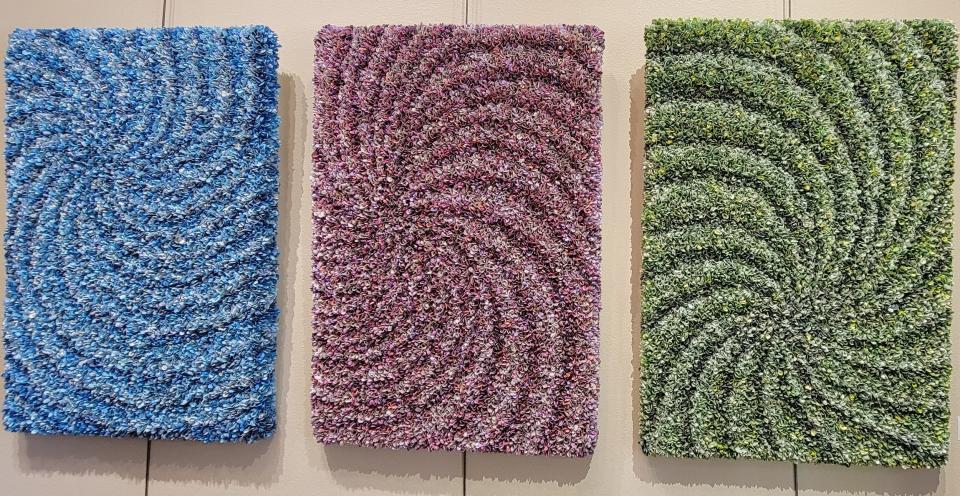
Born in South Korea and based in Edmond since 2009, when her husband's job brought them to Oklahoma, Karam earned her Bachelor of Fine Arts in computer-based design in 1996 at Parsons School of Design in New York City. Once a landscape painter, over the past eight years, she has become known for creating what she calls "unpainted paintings," using a pastry bag rather than a paintbrush to apply a paint mixture to her canvases.
"When I was young, I preferred making art that was different, destructive and unconventional. People around me used to be shocked by such an unconventional appearance, but I did not mind. Nowadays, the art that I think of is 'peacefulness,' and my works represent stability rather than stimulation," Karam told The Oklahoman in an email interview.
"Sometimes I miss my older style, and I wonder what it would have been like if I had kept up with it. ... I am comforted by the hope that many people feel peace of mind and tranquility while looking at my artwork, because I am now in my 50s, not in my 20s!"
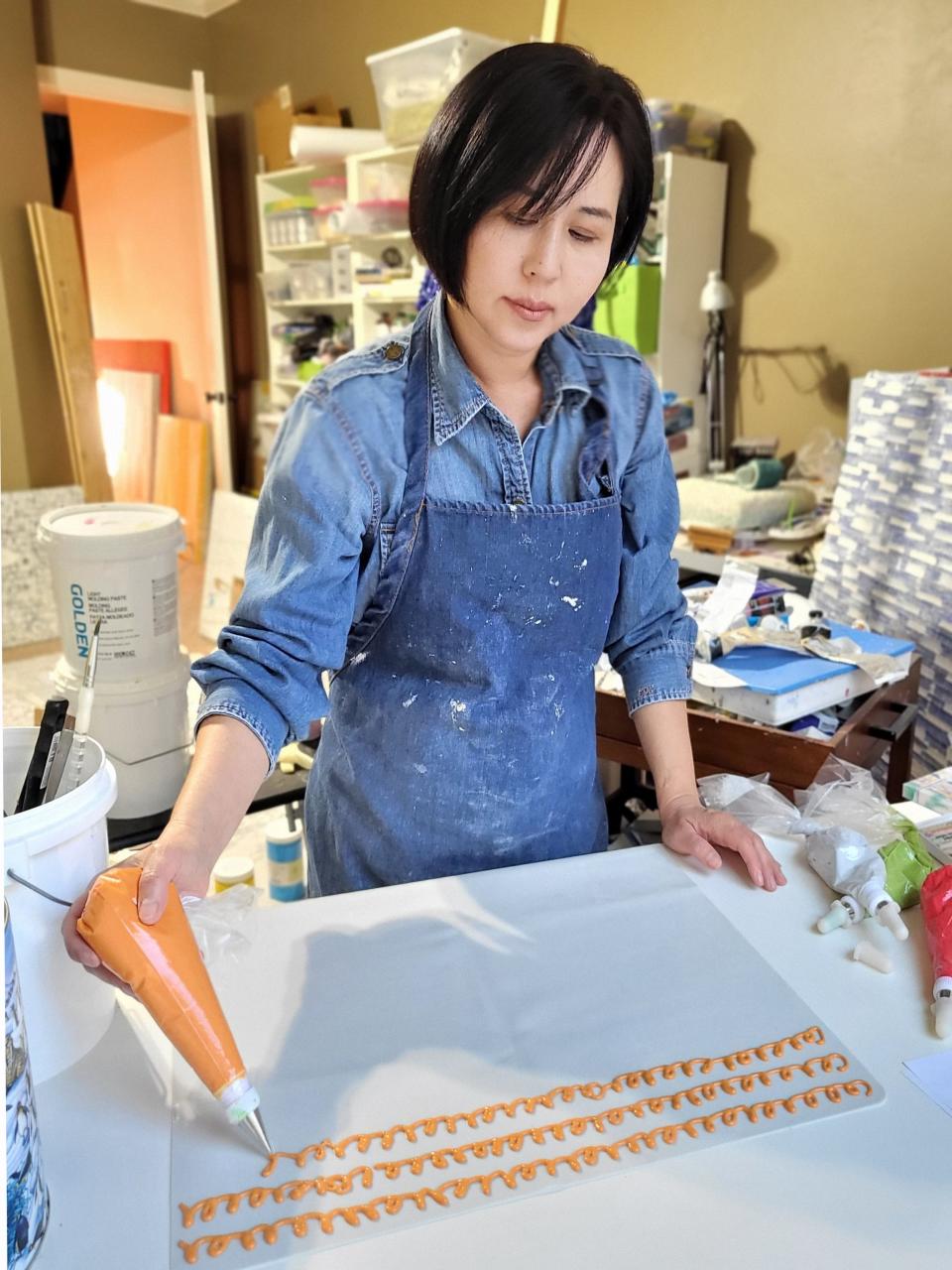
Karam also revealed how she developed her unusual artistic technique, how her art reflects her Korean roots and how Oklahoma has influenced her work in her interview with The Oklahoman:
Q: Can you describe how you created the works in your 'C'est la vie' exhibit?
Karam: My exhibition 'C'est La vie' features two series. One is the 'Tangle' series, and the other is the same as the title of the exhibition, 'C'est La vie.' The two series have relatively similar techniques, but there are many differences in the final product.
First, I squeeze a mixture of acrylic paint and molding paste into a piping bag and make stripes. After drying the squeezed mixture, I twist each of the dried stripes and attach it to the canvas.
The 'Tangle’ series uses a less watery and thick mixture, while the 'C'est La vie' series uses a more fluid mixture to create a wavy strip. Another difference is the way that the strips are attached to the canvas. The 'Tangle' series are attached by rolling these strips in a round shape, while the 'C'est La vie' series are attached by twisting the wavy strips like a flower.
Q: How and when did you develop this technique?
Karam: I've been using this technique of creating texture by squeezing the paint mixture like this since 2015. ... I was brainstorming how to make long, textured lines quicker, which led me to experimenting with putting the paint mixture in the piping bag to make the lines. ... This new technique developed in an effort to create textures on my paintings more effectively. To accomplish this, I had to stack the different layers of mixtures over and over again.
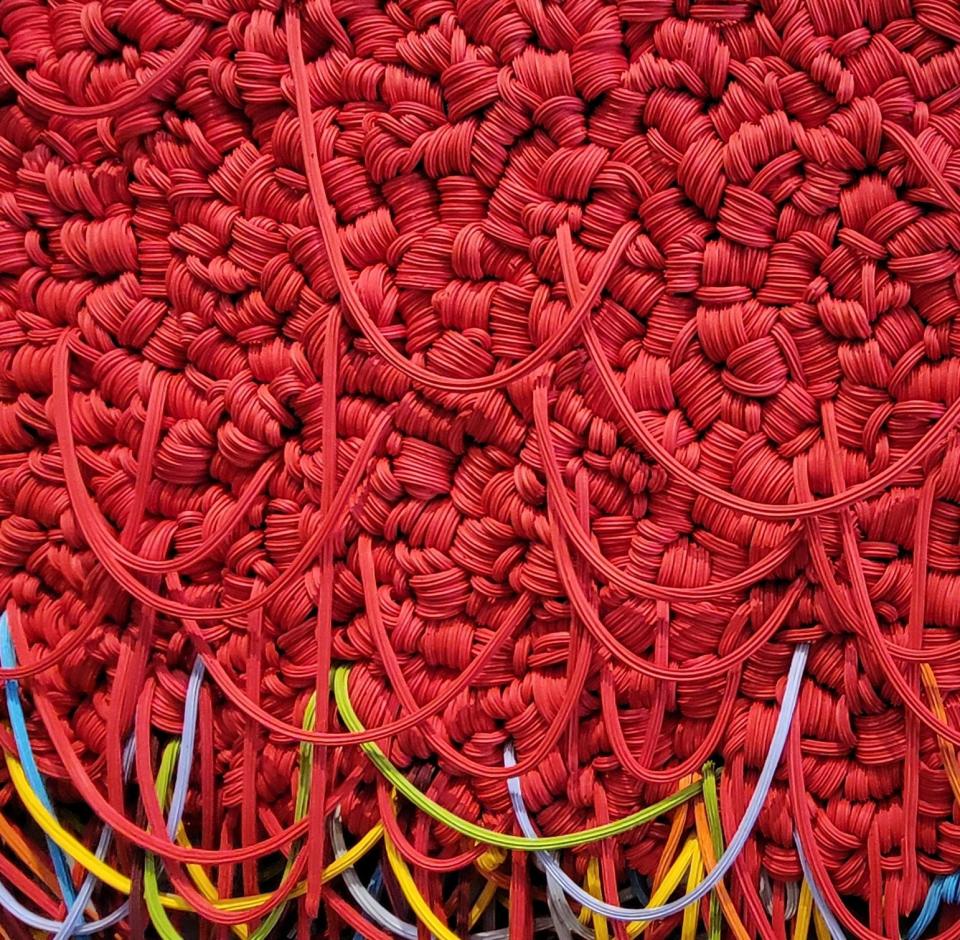
Q: How long does it take to create one of your works like the ones in 'C'est la vie?'
Karam: The larger the painting, the longer it takes, but it usually takes less than one piece per month. So, I make around 10 pieces a year.
Q: Do you consider these works to be paintings?
Karam: Some people call my work 3D art, but I do not really consider my works paintings. I think of them rather as 'unpainted paintings.' I also like to label my process as 'filling' not 'painting.' I fill up the space and empty myself. In fact, if you repeat the same thing over and over again, I find myself in a spiritual state that lacks all thoughts and worries.
In Buddhism, when you want something good to happen or want to get rid of a big worry, you bow in a position where you put five parts of your body on the ground: your elbows, knees, forehead, back of your hands and feet. Usually, (you do it) 3,000 times, 5,000 times, 10,000 times, or even more. It's an act to empty your mind and get rid of greed. I think it is a sort of performance art.
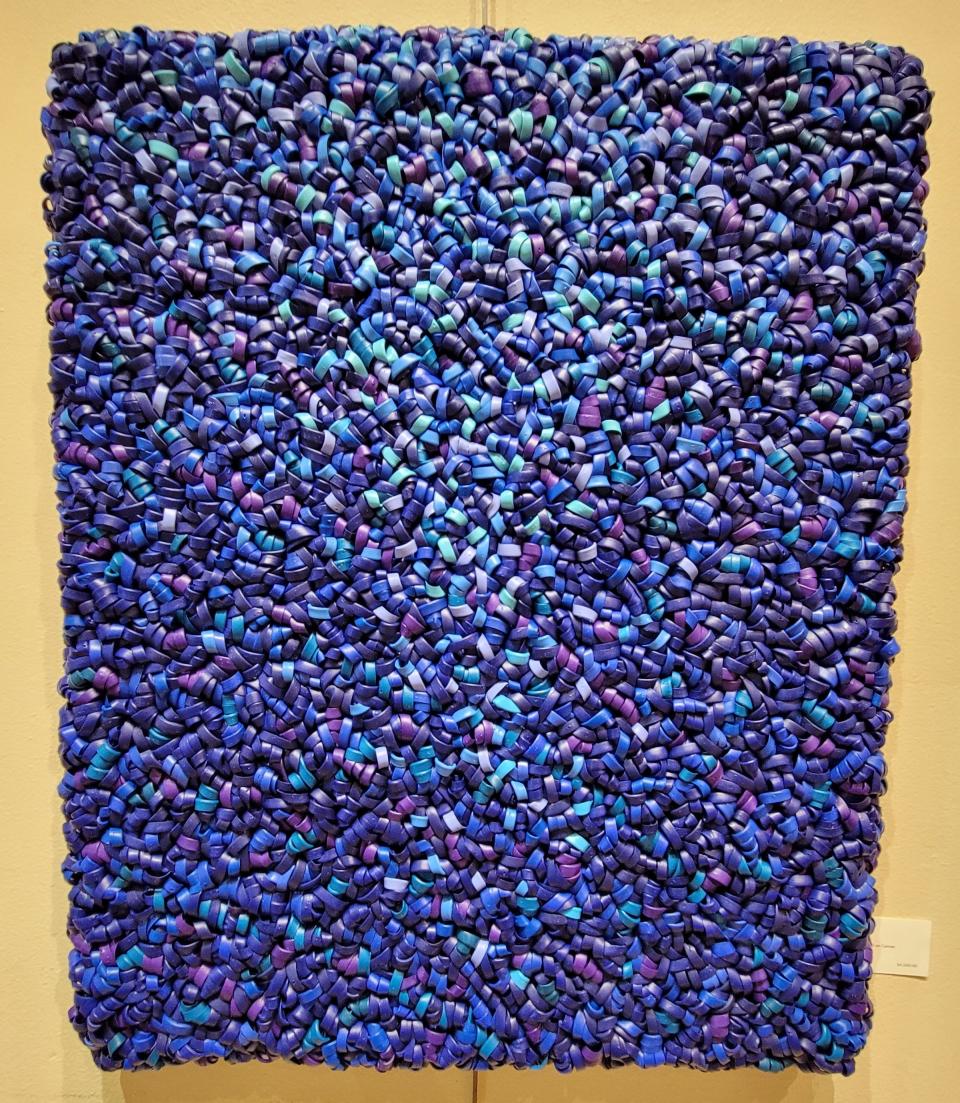
Q: Does your art reflect your Korean roots? If so, how?
Karam: A message that had been steadily instilled in me since I was young is 'Do it until you can' (and) 'Do it again and again until you're satisfied.' Things may have changed now, but when I was learning art, persistence and repetition were rewarded. Koreans think of this long path of practice as a virtue of life and repetitive actions as a meaning of performance, which is exemplified by 'Dansaekhwa,' the representative monochromatic painting of Korea.
This process of repetition based on each artists’ unique material is quite different from Western Minimalism. However, I didn’t really like this mindset, because, while the process is important, I had believed that solely focusing on repetition killed creativity.
As I have grown older, I have come to better terms with this mindset of repetition, and I have found myself unintentionally incorporating the Dansaekhwa style into my own work. Even after all of these years living in the United States, this shows that my Korean roots still have an influence on me!
Q: How has your time in Oklahoma influenced you as an artist?
Karam: I have always preferred to live in a city where a lot of things are happening, a stark contrast from life in Oklahoma, which I have come to realize is not that busy but very peaceful. At first, I complained to my husband that I couldn't live in such a stuffy and boring place. … This actually led me to begin painting. It was a wonderful way to discover excitement in my life.
It was not easy painting day and night while raising two children at the same time, but fortunately, my kids grew up very well. I really appreciate the love and support that the people here have shown me, and their appreciation of my paintings motivates me to continue to work as an arist.
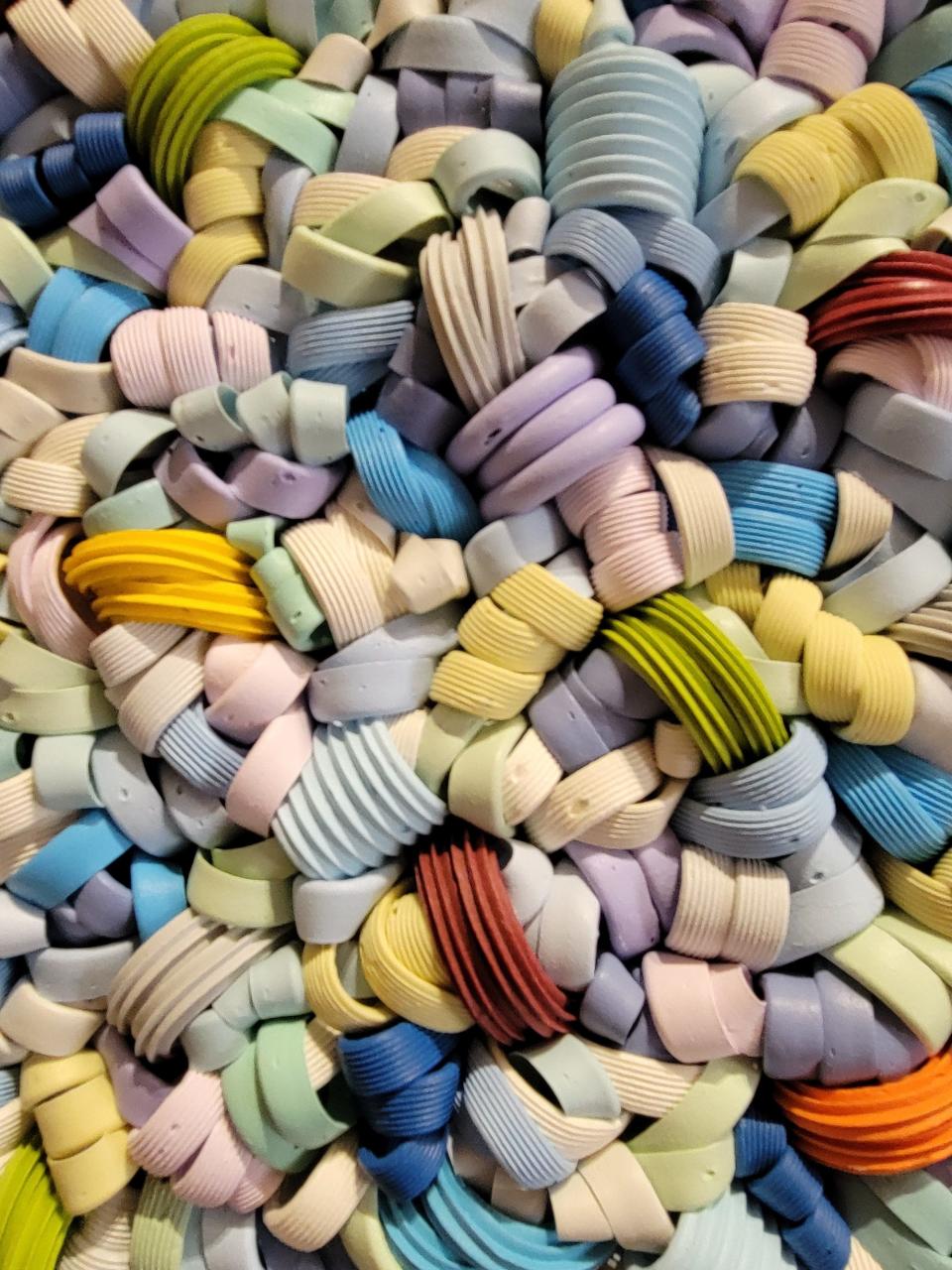
Q: You changed from painting landscapes to creating abstract art. What made you change?
Karam: Not long after I started painting landscapes, many people loved them, and I was able to sell almost all of my paintings. During one of my solo exhibitions, I received two commission requests for the same painting. As I began painting with the two canvases side by side, I suddenly asked myself, 'What am I doing right now?'
The decisive reason why I quit my previous graphic design job was that I was tired of designing to suit my clients' tastes, yet I found myself painting (to suit) my clients again. I realized that I shouldn’t do this anymore. I wanted the freedom to create works that I wanted to create, and that freedom took me to abstract art.
I'm often asked by people who previously loved my landscape works if I plan on going back to landscapes. But I don't regret it. I'm still evolving. The spirit of challenge is rising endlessly through abstract art.
I'm working with new materials these days, so please look forward to the next series, which might be very interesting.
KARAM'S 'C'EST LA VIE'
When: Through Aug. 31.
Where: JRB Art at the Elms, 2810 N Walker.
Information: https://www.jrbartgallery.com and https://karamcheong.com.
This article originally appeared on Oklahoman: Korean American artist gets abstract with a pastry bag in OKC exhibit

